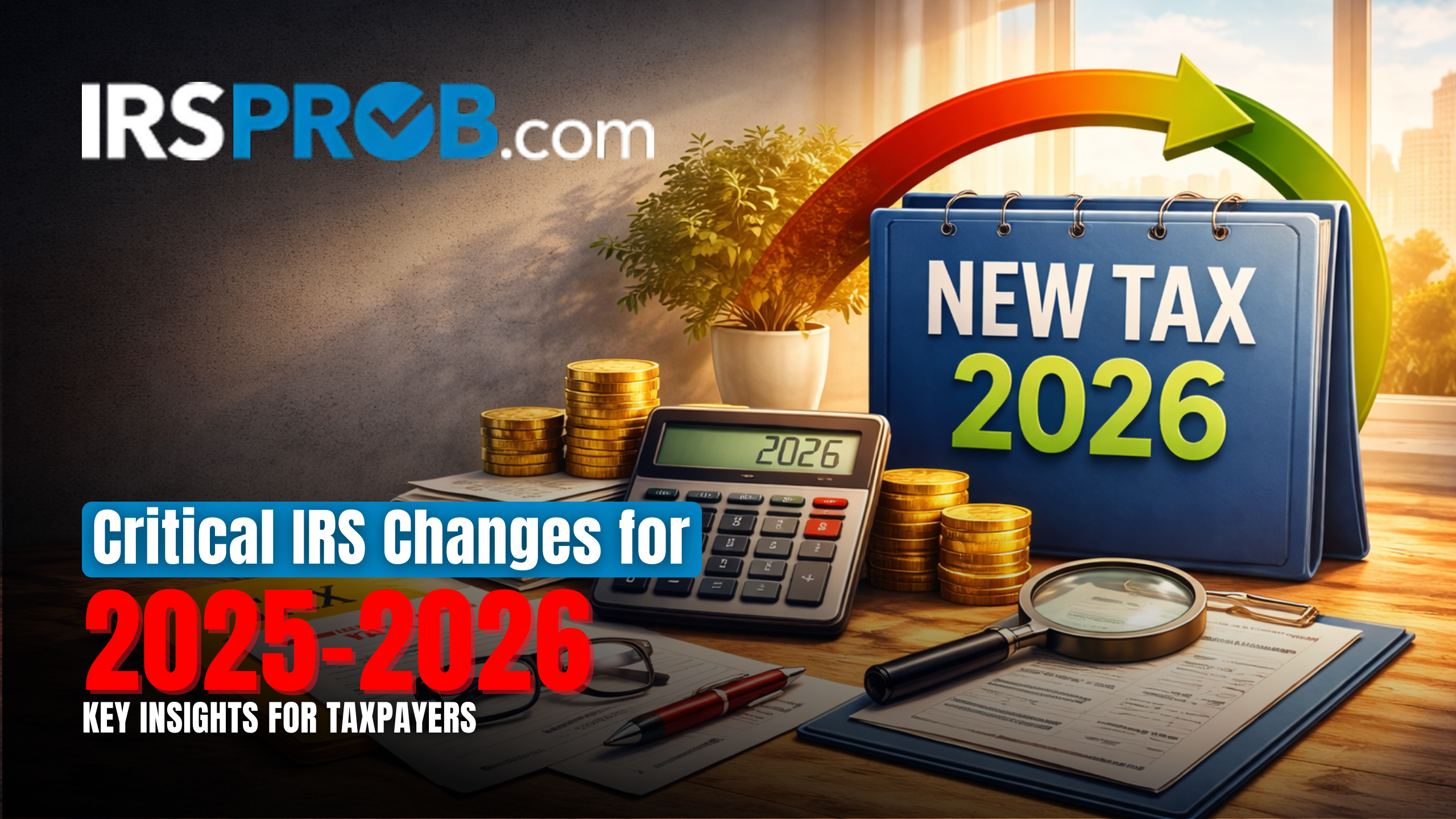[vc_row][vc_column][vc_column_text]As we know, many taxpayers are struggling to pay their taxes due to the COVID-19 pandemic. Over million Americans owe a total of more than $125 billion in back taxes to the IRS, and this number will probably grow.
During the first wave of the pandemic in March, the IRS started the People First Initiative, which put a temporary halt to most collection efforts. However, the People First Initiative expired July 15, 2020. The IRS is once again ramping up enforcement. It began sending out balance due notices to some taxpayers in late October.
But the IRS is still aware that substantial numbers of taxpayers cannot pay what they owe at this time. To aid them, it has started a new Taxpayer Relief Initiative. The Taxpayer Relief Initiative is far more modest in scope than the People First Initiative. But it still provides valuable help to Americans who owe the IRS back taxes. Here are two important rules:
1.) Don’t ever ignore a tax bill from the IRS.
2.) Never feel you’re helpless when confronted by the IRS collection behemoth. You always have options for dealing with a tax bill you unquestionably owe. You can:
1.) Pay in full.
2.) Pay in monthly installments, by agreement with the IRS.
3.) Reduce, eliminate, or pay the debt through bankruptcy.
4.) Reduce the debt and pay it through an IRS offer in compromise; or
5.) Have the IRS determine that you are temporarily unable to pay and suspend collection.
The IRS Taxpayer Relief Initiative makes all but the bankruptcy option more taxpayer-friendly.
Payment in Full Extension
If you’re able to pay your tax bill in full in one lump sum, but you need a little extra time, you may obtain an extension of time to pay. To qualify, you must owe no more than $50,000 ($25,000 for business taxpayers) in
combined income tax, penalties, and interest. You must also have filed all required tax returns. Normally, the extension is for 120 days. The Taxpayer Relief Initiative extends the time for such short-term
payment plans to 180 days.
To enter into a short-term payment plan for 180 days, call the IRS at the number on your tax bill. (As of November 30, 2020, the IRS had not updated its online plan for the 180 days so he phone number is your best bet.)
The IRS will not bill you for a user fee if you pay your tax liability in full within 180 days. But note that the IRS charges interest and a late payment penalty for each month you carry a tax balance. The initial late payment penalty is 0.05 percent per month, which is reduced to 0.025 percent if you qualify for a
payment plan. The interest rate changes quarterly, so figure an additional 3 percent to 4 percent on average if you wait six months to pay what you owe.
Installment Agreements
If you can’t pay your balance in full within 180 days (or if you don’t qualify for a short-term payment plan), you can enter into an installment agreement with the IRS. This enables you to make monthly payments to pay off your tax
bill over a much longer time. Again, you’ll have to pay penalties and interest.
There are several types of installment agreements.
Streamlined installment agreement. Streamline installment agreements the easiest type of installment
agreements to get and have been available for many years. You qualify for one only if you owe less than $50,000 in
taxes, penalties, and interest ($25,000 for business taxpayers).
You also must not have owed any tax or had an installment agreement during the past five years. You must agree to pay off your tax bill within 72 months (or, if sooner, before the 10-year statute of limitations on your tax debt
expires).
You don’t need to make financial disclosures with your application, and the IRS will not file a tax lien. You can apply
online. If you apply online, streamlined agreements are granted automatically in as little as 30 minutes.
Non-streamlined installment agreement. The Taxpayer Relief Initiative establishes a new, non-streamlined installment agreement for taxpayers who owe $50,000 to $250,000. You must agree to pay all you owe within the
10-year statute of limitations, but you don’t have to complete the lengthy and intrusive IRS Form 433-F, Collection Information Statement. This option is available only if your case has not been assigned to an IRS revenue officer.
Ordinarily, the IRS will file a tax lien on your property when you owe this much money. But if your tax liability is for tax year 2019 only, you can obtain such an installment agreement without a tax lien.
Note: Obtaining an installment agreement for such a large amount without a lien is an enormous benefit. If you qualify, you should take advantage of this offer. The Taxpayer Relief Initiative also makes life easier for taxpayers who already have installment agreements.
Ordinarily, if you miss one or more payments, the IRS will revoke an installment agreement. Now, the IRS will automatically add certain new tax balances to existing installment agreements for individuals and out-of-business taxpayers instead of revoking the agreement.
Finally, the Taxpayer Relief Initiative stresses that installment agreements are not set in stone. You can apply online to change your monthly plan amount or monthly due date. This online option is available only if you have a direct
debit installment agreement and your monthly payments are automatically paid to the IRS from your bank account.
Offers in Compromise
Taxpayers who can’t afford to pay the IRS the taxes they owe can enter into an offer in compromise (OIC) with the
IRS, in which the agency accepts payment of less than the full amount owed.
OICs are not easy to get. You must file a lengthy OIC application disclosing your financial situation and make an OIC. Your OIC must equal the net realizable value of your assets, plus your excess monthly income after
subtracting your monthly expenses. You then make monthly payments for up to two years. Unfortunately, many taxpayers with accepted OICs fail to make their required payments and end up having their OICs canceled by the IRS. The Taxpayer Relief Initiative provides that the “IRS is offering flexibility for some taxpayers who are temporarily unable to meet the payment terms of an accepted Offer in Compromise”.
No further details have been provided by the IRS. But if you have an accepted OIC and are unable to make your payments, you should contact the IRS and seek relief. The IRS may temporarily suspend your payments, temporarily permit you to pay less than the full amount, or even renegotiate the OIC to allow you to permanently make lower payments. Be prepared to show that your ability to pay has been impaired since your OIC was accepted by the IRS
Suspending Collection of Your Tax Bill Due to Hardship
In cases of hardship, the IRS can temporarily suspend collection of a tax bill until your financial condition improves. Your account balance is classified as “currently not collectible,” or CNC. Generally, you must show you have either no equity in assets or insufficient income to make any payment without causing hardship. “Hardship” means you’re unable to pay reasonable living expenses. You may be required to submit one or more collection forms showing your assets, liabilities, income, and expenses. If CNC status is approved, you shouldn’t hear from the IRS again for six months at least. Nevertheless, interest (and late payment penalties) still accrue.
To request a temporary delay of the collection process or to discuss your other payment options, contact the IRS at 1-800-829-1040 or call the phone number on your bill or notice.
Don’t Forget Penalties and Interest Almost all tax bills include penalties and interest. But you may be able to avoid paying some or all of these penalties.
The Taxpayer Relief Initiative highlights two ways for you to have penalties reduced or eliminated:
1.) Reasonable cause. Penalties for failure to file, failure to pay, or failure to deposit taxes can be reduced or eliminated if you have a reasonable cause—for example, illness or inability to obtain
records.
2.) First-time abatement. If you haven’t been assessed an IRS penalty for the prior three years, you could qualify for first-time penalty abatement. This allows you to remove failure-to-file and/or failure-to-pay penalties for a single tax year, as well as failure-to-deposit penalties for business payroll taxes for one quarter. You don’t have to show the IRS you had reasonable cause for failing to file, nor do you have to pay the penalties.
Final Thoughts
The IRS has begun to restart its collection efforts against the more than 11 million Americans who owe back taxes. But the agency has issued a new Taxpayer Relief Initiative that provides struggling taxpayers with some additional relief:
1.) Taxpayers can now get up to 180 days, instead of 120, to pay a tax bill.
2.) Installment agreements will be more easily available to taxpayers who owe between $50,000 and $250,000.
3.) Existing installment agreements will not be as quickly revoked when taxpayers miss payments.
4.) Taxpayers will be able to modify many installment agreements online.
The IRS also stresses that penalty relief is available if you have reasonable cause or have never been subject to penalties before.[/vc_column_text][us_image image=”1613″][/vc_column][/vc_row]






